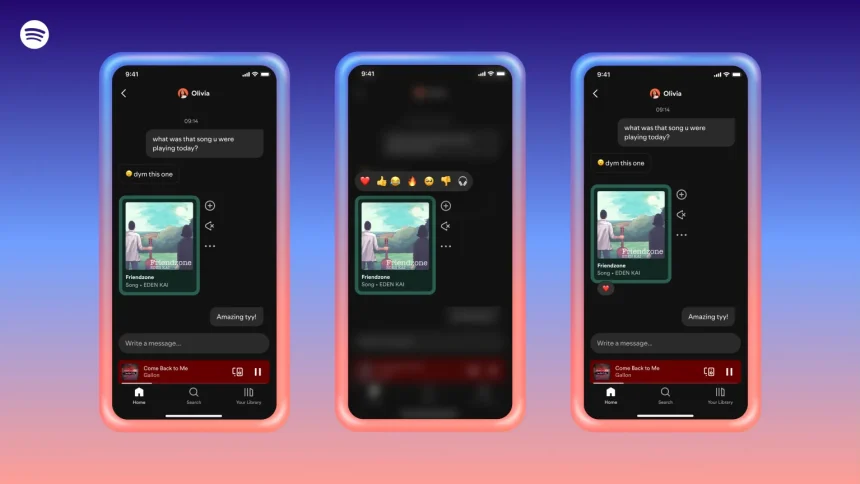Spotify is rolling out a new in-app messaging feature, allowing users to chat directly within the app — part of its push to become more of a social platform for music and podcast consumption.
Why it matters
For years, Spotify users have shared songs and podcasts externally through WhatsApp, Instagram, or other platforms. With in-app messages, Spotify wants to keep those interactions — and content discovery — inside its ecosystem.
How it works
- Messages are one-on-one only — no group chats.
- You can start a chat with someone you’ve already shared content with, collaborated on a playlist, joined a Jam/Blend, or share a Family/Duo plan with.
- New chat requests require approval.
- Users can also react with emojis, and messages appear under the Messages section in the app’s left hover bar.
Between the lines
Spotify says the feature complements — not replaces — external sharing. If someone sends you a Spotify link on Instagram, WhatsApp, or TikTok, you’ll be able to approve their chat request directly.
Security check
- Messages are encrypted in transit and at rest, but not end-to-end encrypted.
- Spotify monitors chats for rule-breaking content and allows users to report conversations.
Rollout:
- Available now on mobile only, for users 16+ in select Latin and South American markets.
- Coming to the US, Canada, Brazil, EU, UK, Australia, and New Zealand in the coming weeks.
The bigger picture
- Spotify has slowly been layering in social features: following friends, podcast comments, and a redesigned video-focused feed.
- Critics say the app is becoming cluttered. Some users complain the interface feels overwhelming, raising concerns that messages may add to the noise.
- Luckily, users can opt out under Settings > Privacy and Social.
What they’re saying
Spotify Chief Product & Tech Officer Gustav Söderström recently teased more interactive features: “The consumer experience will be much more interactive.”
What’s next
If successful, in-app messages could strengthen Spotify’s bid to compete with platforms like TikTok, where music discovery and social interaction already intersect.
Source: Techcrunch










